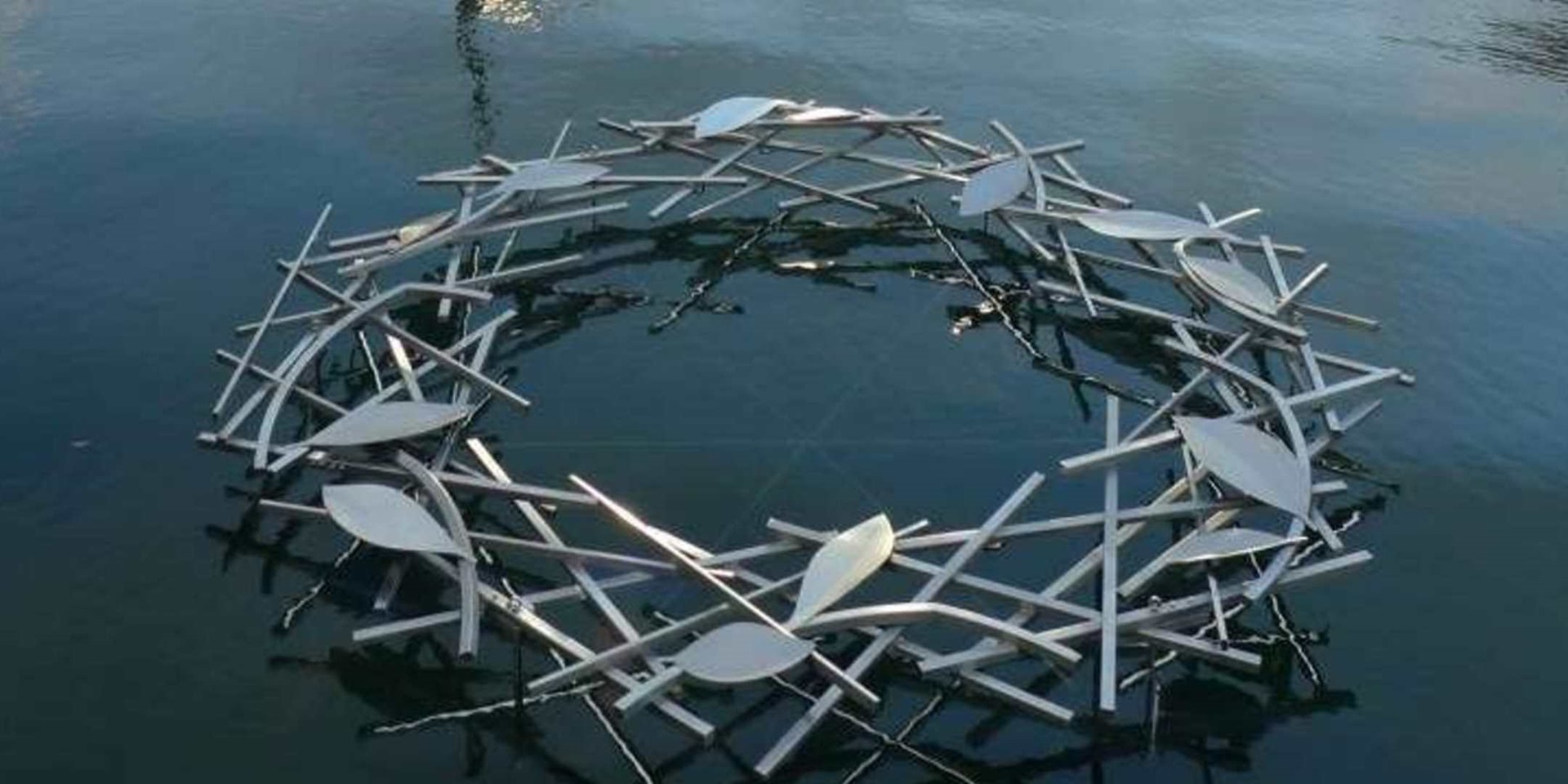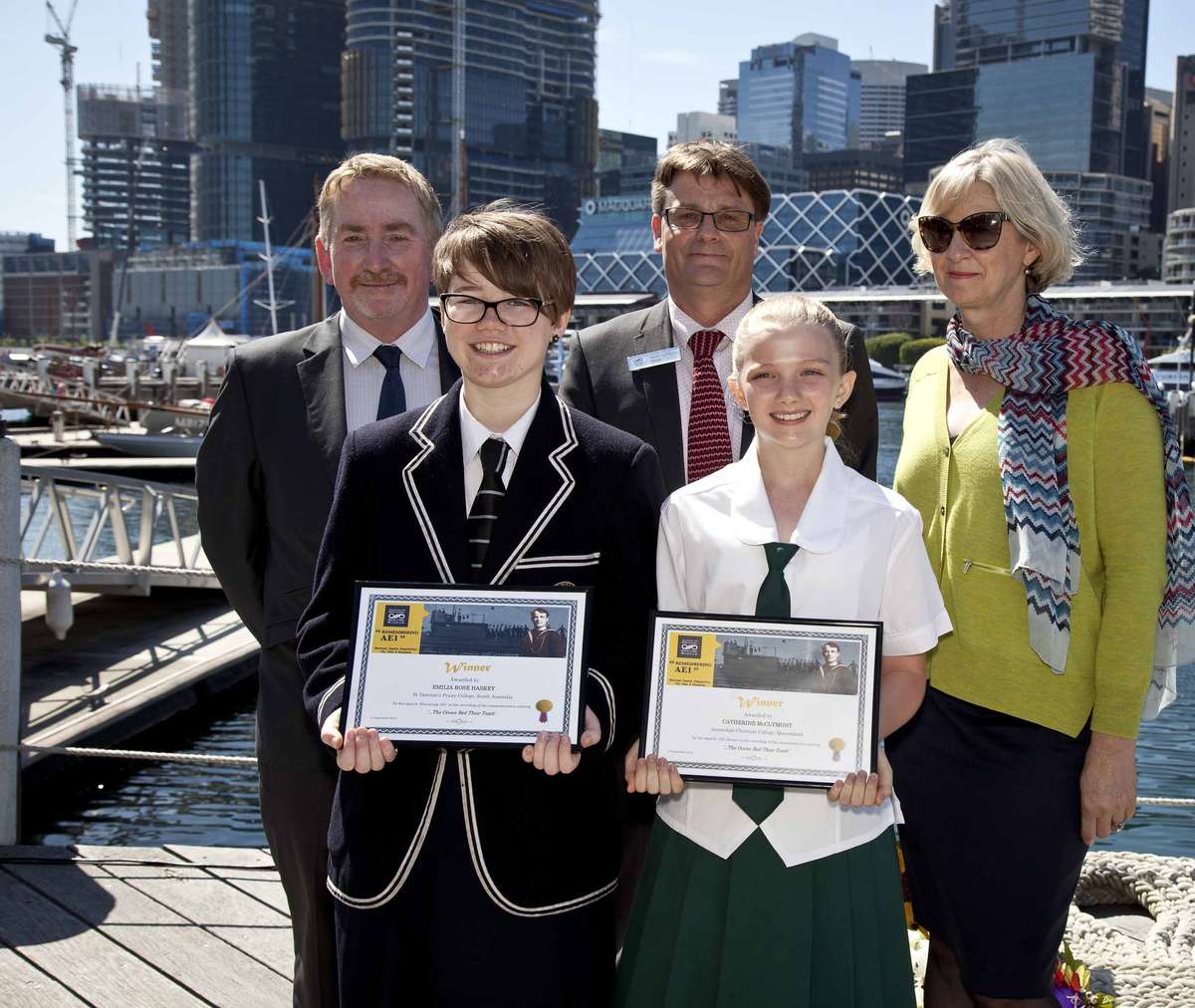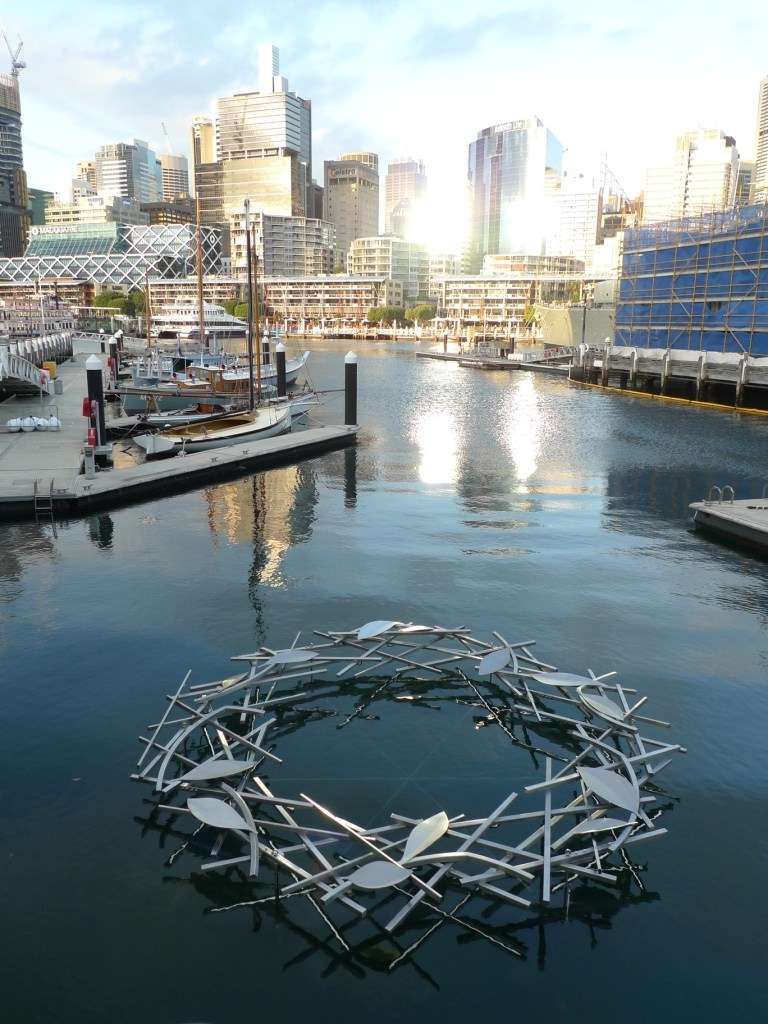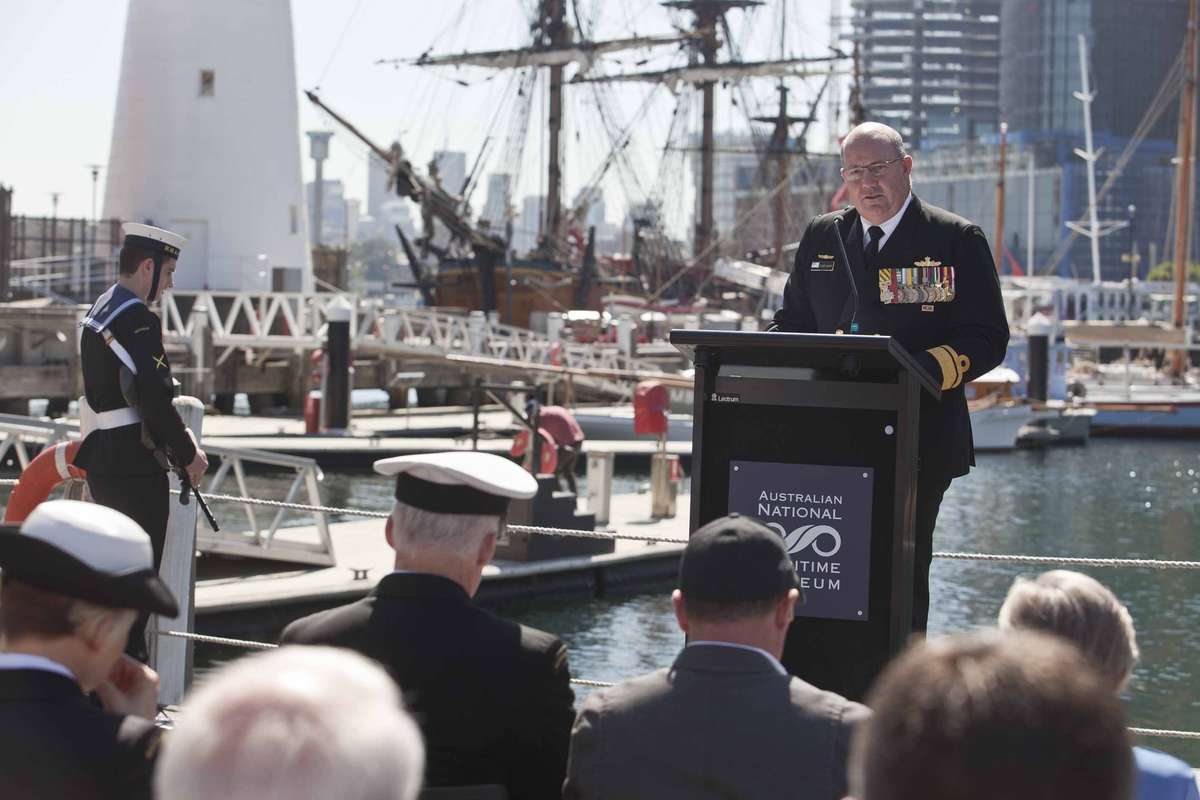

Student speech competition winners Emelia Rose Haskey and Catherine McClymont with ANMM Director Kevin Sumption (centre back) and judges Jeff Fletcher and Daina Fletcher. Photo: Andrew Frolows
‘Remembering AE1’ … a deceptively simple title that invites a sense of reflection and commemoration. This was the topic set before Year 9 history students in a national speech competition to help mark 101 years since AE1, Australia’s first submarine, disappeared with all hands at the start of World War I, never to be found. The occasion to deliver that speech would be the unveiling ceremony of Warren Langley’s wonderful artwork ‘…The Ocean Bed their Tomb’, a stainless steel wreath sculpture that now hovers over the water outside the museum.

‘… the ocean bed their tomb’ at the Australian National Maritime Museum.
The entrants needed to take the title, the events, the artefacts and the legacy to investigate the story for themselves and discover what remembering AE1 would mean to them and, importantly, to their audience. The result was, of course, that it means something different to everyone. So, on Monday 14 September 2015, two Year 9 girls, one from Queensland, one from South Australia, delivered their winning speeches to a crowd of people who all had their own stake in the history, people and emotions of the AE1 story.

Catherine McClymont (left) and Emelia Rose Haskey deliver their winning speeches at the unveiling ceremony, 14 September 2015. Photo: Andrew Frolows
Catherine McClymont and Emelia Haskey gave us their interpretation, delivered with confidence, empathy and a youthful intensity that stirred the emotions of everyone there. They talked about remembrance, loss, bravery, duty, history, hardship, families and significance. They invited us to consider the men of AE1 as ordinary people who found themselves in an extraordinary situation and stepped up to face the danger. Catherine reminded us of the words of AE1 Lieutenant-Commander Thomas Fleming Besant:
Oh, yes, it’s dangerous if you want to look at it like that. But it’s got to be done’… ‘And every man in the Navy, no matter what branch he is in, has to be prepared to meet danger when it comes.
Emelia said:
These men were husbands, fathers and sons. They wrote letters, made jokes, obeyed orders and did their jobs. How ordinary they seem, yet how extraordinary have they become.
Catherine went on to talk about the concept of reflection and how it is realised in the artwork, then her own feelings when her father, who served in the military, went away on active service, and also the emotional chasm the families of the AE1 crew had to face.
I believe the crew of the AE1 would have strove to uphold the 5 Navy Values: Honour, Honesty, Courage, Integrity and Loyalty. The Ocean Bed their Tomb. Reflect, pause, ponder and remember our naval heroes.
Emelia asked us to consider why, after all this time, we still search for AE1 and how the artistic process behind the sculpture captured the essence of remembrance.
I believe it is because tragedy unites us. A great loss is always remembered because of its impact and its significance.
To remember them this beautiful sculpture ‘The Ocean Bed Their Tomb’ has been created. This fantastic artwork that has been so lovingly made does more than just honour the members of AE1, It gives us something to be proud of.
Importantly, both students brought their own perspective to the dais—two different yet connected interpretations of the same set of circumstances and it was a credit to them both that they held the stage with such assurance. I asked them afterwards if they were nervous and the answer was, ‘yes, but it was such an inspiring occasion.’ I think the girls learned something important today.

Rear Admiral Stuart Mayer, Commander of the Australian Fleet. Photo: Andrew Frolows
Afterwards, Rear Admiral Stuart Mayer, Commander of the Australian Fleet, prefaced his keynote address by saying the girls were a hard act to follow… and he was right! It’s quite appropriate, really, because on a day when remembering was key, what better way to ensure AE1 is not forgotten than to place the story in the hands of young people.
Read more about the mysterious disappearance of submarine AE1, the ongoing search for its wreck site, and the development of the commemorative sculpture ‘… the ocean bed their tomb’.
